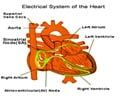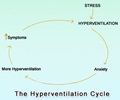Batteries made of silver nanoparticles could revolutionize treatment for some of the most persistent diseases through devices implanted in the brain to treat stroke and mental illness.
Batteries made of silver nanoparticles could revolutionize treatment for some of the most persistent diseases - through devices implanted in the brain to treat stroke and mental illness or in the spine to treat chronic pain.
The possibilities are infinite. For it might be possible to fabricate devices to be implanted in the vagal nerve system to treat migraines, Alzheimer's disease, anxiety, even obesity, US researchers say.The nanoparticles are part of a new family of materials being created in the laboratory of Esther Takeuchi, Distinguished Professor and Greatbatch Professor of Advanced Power Sources PhD, at the State University of New York.
It was Ms Takeuchi who developed the lithium/silver vanadium oxide battery two decades ago. Now while more than 300,000 of defibrillators are being implanted every year, the majority of them are powered by the battery system developed and improved by Takeuchi and her team. For that work she has earned more than 140 patents, believed to be more than any other woman in the United States. Last fall, she was one of four recipients honored in a White House ceremony with the National Medal of Technology and Innovation.
Now Prof. Esther and her husband and co-investigator, SUNY Distinguished Teaching Professor of Chemistry Kenneth Takeuchi, PhD, and Amy Marschilok, PhD, an assistant professor of chemistry, are exploring even better battery systems, by fine-tuning bimetallic materials at the atomic level.
Their research investigating feasibility for ICD use is funded by the National Institutes of Health, while their investigation of new, bimetallic systems is funded by the U.S. Department of Energy.
So far, their results show that they can make their materials 15,000 times more conductive upon initial battery use due to in-situ (that is, in the original material) generation of metallic silver nanoparticles. Their new approach to material design will allow development of higher-power, longer-life batteries than was previously possible.
Advertisement
"We may be heading toward a time when we can make batteries so tiny that they -- and the devices they power -- can simply be injected into the body," Takeuchi says. Right now, her team is exploring how to boost the stability of the new materials they are designing for ICDs. The materials will be tested over weeks and months in laboratory ovens that mimic body temperature of 37 degrees Celsius.
Advertisement
So then biomedical applications hold promise for a wide range of diseases including Alzheimer’s and obesity.
Source-Medindia
GPL














